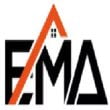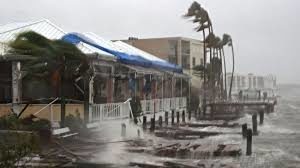Hurricane damage inspections
EMA Staff engineers perform hurricane damage inspections are performed by EMA Staff engineers. In natural disasters, including hurricane damage & water damage, flood damage, roof damage by storm, wind, and hail, foundation scouring and damage, and structural damage, a quick and coordinated recovery is critical. Not only is the safety and well-being of our loved ones at stake, but the welfare of society depends critically on the resilience of its business community to natural disasters.
We have experienced structural engineers & forensic engineers inspectors in Hurricane damage assessment. We at EMA are prepared to mobilize our staff of engineers, certified inspectors, and technicians to aid in the recovery process. To assist in coordinated long-term recovery, our structural & forensic engineers offer the following areas of expertise.
Structural Hurricane damage Inspections and assessment
Repair claims ( residential & commercial)
Forensic Engineering for building damage due to hurricanes
Foundation collapse analysis
Roof damage reports
Wind damage reports
WOOD FRAME STRUCTURE
EXTERIOR:
* Fence support is broken at the ground or blown over
* Landscape damage, largest size broken limb, trunk to check against F scale
* Roof blown off or displaced (check wall-roof connection; sometimes it is not evident)
* Broken windows — will indicate wind forces entering the building
* Brick blown off walls or in place
* Chimney and roof vent condition. It may cause carbon monoxide poisoning if used in damaged condition
* Above-ground utility services — connected or off
INTERIOR:
* Always look ahead and keep the exterior in sight
* Do not touch exposed electrical wires or lights
* Check wall-roof connections. Look for evidence of separation
* Check for diagonal fracture of wall surfaces, if rigid like gyp board
* Watch for spilled liquid in and near kitchens, bathrooms, and garages. Very dangerous!
* Look for loose structural items that might collapse. Always assume they will.
* Check stability of interior walls
* Check what happened to occupants if they were in the structure during the storm
* Check conditions of any basements, cellars, out buildings
OTHER TYPE STRUCTURES OF HURRICANE DAMAGE INSPECTIONS
All of the above, plus the following for the special structure:
Steel Frame or Load-Bearing Walls
* Bent frame
* Broken welds on beams and trusses and at connections
* Reverse-loaded steel beams and trusses
* Racking of the frame
* Wind bracing broken, bent
* Glass breakage
* In high-rise buildings, watch for frame twisting, offsets
Concrete Frame, Slab
* Gouges from columns and floor surfaces from impacts
* Cracks running parallel with reinforcing steel
* Splitting out of the rebars
* Column-slab juncture, condition. Watch for spalling of concrete
* Look for previous water damage and spalling.
Damage Inspections, Roof Repairs and Installation
The roofing system is one of the most vulnerable to storm damage, because so many factors can have an impact on a roof. A hurricane damage inspection of the roof is based on a number of key indicators, whether the roof has been hit by high winds, a downed tree, a catastrophic hailstorm, or even a lightning strike.
- A tree on the roof, or roof or wall sections that have been blown open by a storm, are some of the most obvious signs of potential damage and risk. Safety comes first, so stay out of the building until a contractor has examined it for structural hurricane damage inspections.
- Signs of storm damage to a roof can often be evident while standing on the ground. Missing shingles, metal pieces displaced from around the chimney, damaged exhaust pipes, roof valleys, outer edges or angles where the roof meets the walls, can sometimes be seen from the ground.
- Other damage can be assessed from inside. The attic can be inspected for leaks or water damage. Water stains might be seen on the ceiling or walls. These all point to the need for repairs or a roof replacement.
- When on a ladder or on the roof itself (for safety, we DO NOT recommend that property owners try this themselves), a Certified NIRC Contractor will look for excess granules in the gutters. These granules may have been loosened by hail impacts. While people hear stories of “golf ball-sized hailstones,” the fact is that most hailstones are small – yet they still can cause significant damage to the roof. And loose granules should not be dismissed or overlooked. Granules are vitally important to the functioning of the roof: They protect the asphalt coating from ultraviolet light, add coloring and beauty, and provide fire resistance.
BUILDING EXTERIORS
While siding, stucco and brick are durable exterior finishes, they are susceptible to considerable storm damage. Often, property owners don’t notice the damage until it’s too late to file a claim. It is important to have a property inspected thoroughly after a severe storm event.
Siding
- Vinyl Siding: It can be broken, cracked, or sections of it can be blown off in a storm as determined by a hurricane damage inspection. It’s important to report any damage that might have existed before a storm. Non-storm damage can include siding that is bowing out or appears pushed together, indications that it was nailed onto the wall too tightly. If part of the siding is melted, that can be an indication that a BBQ grill was too close to the wall. There might have been a grass fire or leaves being burned too close to the building. When this type of non-storm damage is acknowledged, it builds credibility and trust between the property owner, the contractor and the insurer. And when the siding is fully replaced, the property owner gets the added benefit of having pre-storm problems cleaned up too.
- Metal Siding: Wind and hail can dent, crease and tear apart metal siding. In addition, the wind will blow other debris like trash cans or tree limbs into the siding and cause damage. Again, in the interest of trust and credibility, we also emphasize that dents and other damage to metal siding occurs over time. Any damage that occurred before a storm hit should also be reported after hurricane damage inspections by P. E.
- EFIS or Synthetic Stucco: Storms can crack, chip and dent exterior EFIS and stucco applications. This damage is often noticeable because an area of the wall will feel soft, or be dented in. There might also be an area that has numerous small cracks radiating in a pattern similar to a spider web. This evidence of damage means that the foam backing behind the exterior EFIS or stucco coat will have to be removed and replaced. It’s more than a simple patch-up job.
- Wood, Cedar,T11: Exterior wood finishes can crack and paint can be stripped off by storms. In more severe events, entire wall sections might be pulled apart. In many restoration projects, the area can be cleaned, scrapped, pressure washed and painted, with only minimal repairs to the wood. More severe damage requires replacement. This includes damage to cedar shakes and lap siding, where the thin edges are particularly susceptible to damage, and the wood will need to be replaced. These are all observations and recommendations that the hurricane damage inspection engineers EMA will include in the hurricane damage inspection report & notes. Vernon.
- https://www.yelp.com/biz/ema-structural-forensic-engineers-tampa-5
- https://www.manta.com/c/mx6k6rx/ema-structural-forensic-engineers


